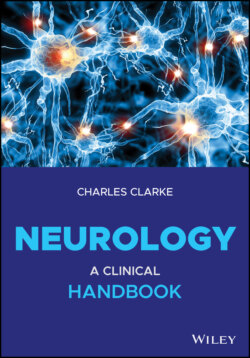Читать книгу Neurology - Charles H. Clarke - Страница 62
Genetic Control of Spinal Development
ОглавлениеThe notochord provides the template for spinal development – its remnants persist as the nucleus pulposus of the discs (Figure 3.1). The notochord orchestrates production of numerous signalling molecules. One is initiated by the protein product of a notochord gene Sonic Hedgehog. Mesoderm becomes segmented into 44 somite pairs (4 occipital, 8 cervical, 12 thoracic, 5 lumbar, 5 sacral and 10 coccygeal) by the end of the fifth week. The driver for this presomitic mesoderm segmentation involves an intrinsic molecular oscillator, a.k.a the segmentation clock. There is rhythmic production of mRNA from genes within the Notch gene‐signalling pathway. Notch‐related genes include Lunatic Fringe (LFNG), Delta‐like (DLL), Presenilin and Mesoderm Posterior 2 (MESP2). Failure of oscillatory signalling leads to failure of segmentation in a rostral–caudal direction. The first, caudal somites are formed normally but then there is loss of segmentation, because of failure of this rhythmicity. Mutations cause skeletal and spinal abnormalities.
Notch genes are involved in longitudinal segmentation. A second group of genes, the Hox (homeobox) family, specifies axial development and defines vertebral shape. In man there are four families of Hox genes (Hox A‐D). Abnormal expression has been demonstrated in mice: for example, mutation of HOXB4 results in duplication of the atlas – a second atlas replaces the axis vertebra. Large Hox mutations produce a severely disrupted body habitus incompatible with intrauterine life. From analysis of mouse and human malformations, many genes have been identified: HOXB4, Notch, PAX1, PAX2, MEOX1, Gli2, Uncx4.1, BMP‐7 and Jun.
